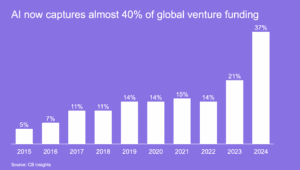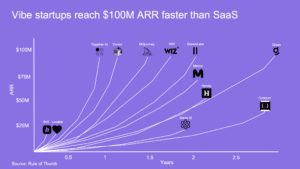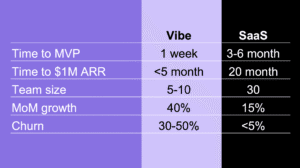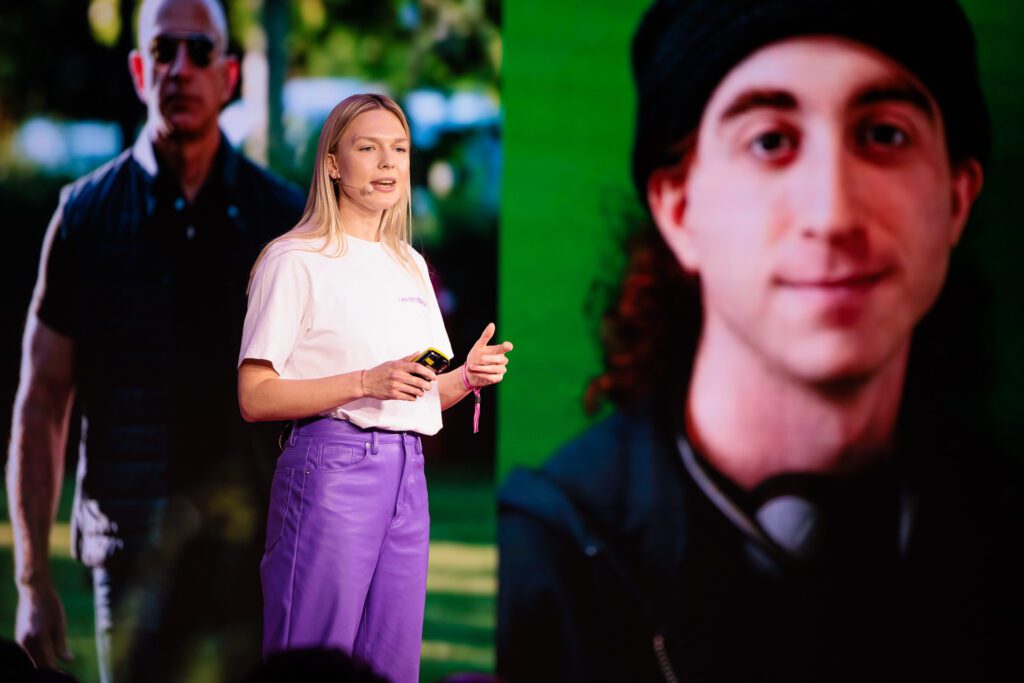The Rise and Reign of SaaS
For more than a decade, Software-as-a-Service was Silicon Valley’s favourite business model. Sequoia, Andreessen Horowitz, Accel – all the marquee funds placed outsized bets on subscription champions such as HubSpot and Shopify. In the 2010s, every third venture-capital dollar reliably flowed into SaaS.

2024: The Year AI Took Over
Then came 2024. 37% of all global VC funding suddenly went to AI companies, up more than sevenfold compared with a decade earlier. Headlines declared “SaaS is dead.” Even Microsoft CEO Satya Nadella half-joked that the subscription era had closed. With that, founders and investors alike began to wonder whether the long-standing “ideal founder profile” had aged out of relevance.
Enter Vibe Entrepreneurship
Powered by generative AI toolkits, today’s builders assemble products the way kids snap together LEGO bricks. Where a proof of concept once took four to six months, a weekend hackathon now suffices. These founders narrate everything in public: monthly recurring revenue, churn hiccups, even screenshots of their Slack debates, turning LinkedIn and X (Twitter) into free focus groups and growth engines.
The Speed and Scale of AI Startups

The numbers are striking. Stripe’s cohort study shows that AI startups hit US$5 million ARR 1.5 times faster than their SaaS peers. Together AI reached US$100 million ARR in 10 months, Cursor in 12. Chinese super-agent Genspark climbed to US$10 million ARR in just 9 days, a pace no classical SaaS company has matched. Midjourney achieved US$200 million ARR with a team of 10, and Cursor required only 20 people for its first hundred million. Cal AI currently holds the productivity record, with each employee generating around US$3 million in annual recurring revenue.

VCs value speed and capital efficiency, so it’s no surprise that in 2024, nearly half of the world’s newly minted unicorns were AI startups, seven times more than ten years ago. Time to reach a billion-dollar valuation has dropped from nine years to around two, and team sizes are half what they once were.
But Speed Isn’t Everything
Rapid growth brings trade-offs. Daily-active-to-monthly-active ratios for consumer-facing AI apps average just 14%, compared with 51% in traditional SaaS. One-month retention sits at 42% versus 63%. While the vibe crowd ascends the acquisition curve quickly, they lose users just as fast.
Meanwhile, the “boring” side of the house continues to generate strong results. Snowflake reported US$1.9 billion in product revenue last fiscal year, grew 70% year on year, and boasts a 158% net revenue retention rate. Venture capital hasn’t abandoned SaaS. In fact, the model still accounted for about 40% of all VC funding in 2024. The subscription playbook remains relevant; it simply needs to operate at today’s pace.
Leading funds such as Accel and Lightspeed have noted that the next wave of AI growth will likely happen in the application layer – agents and vertical products that sit closest to users and revenue. The market will continue to reward fast iteration but will also penalise products that can’t retain users.

A New Playbook: Blend Vibe Speed with SaaS Depth
This all points to a demanding but clear formula. Start by borrowing from the vibe playbook for quick validation: use open models, ship an MVP in days, test ideas with your community, and earn early revenue. Once traction is visible, shift into SaaS gear. Strengthen retention, reinforce your infrastructure, and plan for long-term value. A sprint might get you moving, but only discipline keeps you in the race.
So, is SaaS dead? Not at all. Is AI a silver bullet? Equally unlikely. The most successful founders blend the speed of vibe-building with the depth of SaaS. Jeff Bezos, patient, compounding, obsessively customer-focused, still has insights to offer David Holz, the Midjourney founder who scaled to US$200 million with ten people. And vice versa.
Hype Fades, Habits Stay
It’s never been easier to start a company. Hugging Face recently ran a “vibe-coding” camp for nine-year-olds. If fourth-graders can orchestrate AI agents, the barrier to entry is lower than ever. The real question is whether your product still earns attention once the hype fades and the user has to decide, tomorrow morning, whether to open your app again.
At FIRSTPICK, we ask that question every day when we invest. The answer rarely lies in the headlines. It lives where hype meets habit, with the customer who returns long after the fireworks end.

